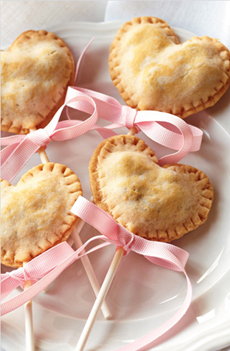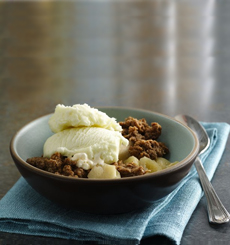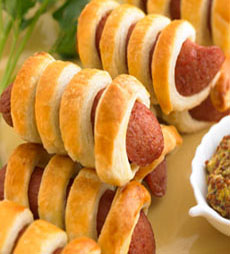|
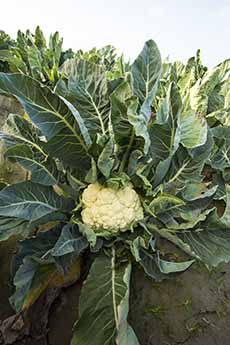
[1] From field to plate: Low-calorie cauliflower is high in fiber, vitamins and minerals, and cancer-fighting antioxidants (photo © Esin Deniz | Panther Media).

[2] The pistachio nut, a member of the cashew family, grows on a small tree that originated in Central Asia and the Middle East (photo © Paul Wence| Pexels).

[3] The lemon also grows on a small tree: a species of evergreen native to Asia, primarily Northeast India, Northern Myanmar and China (photo © Dominika Rose Clay | Pexels).
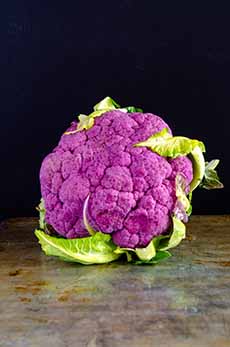
[4] Purple cauliflower, along with orange and green varieties, resulted from a natural mutation (photo © Sheila Joy | Unsplash).

[5] Orange cauliflower (photo © Botanica Restaurant | Los Angeles).
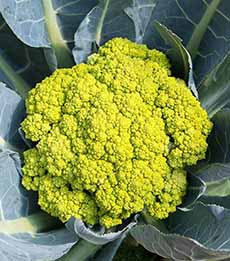
[6] Green cauliflower (photo © The Seed Collection).
|
|
Cauliflower is a member of the cancer-fighting cruciferous† family of vegetables, Brassicaceae, also called Brassicas, which includes arugula, bok choy, broccoli, Brussels sprouts, cabbage/Chinese cabbage, cauliflower, collards, horseradish/wasabi, kale, kohlrabi, mizuna, mustard greens, radish, turnip, and others.
In addition to being low in calories and high in fiber, vitamins, and minerals, cauliflower and its cruciferous cousins are packed with cancer-fighting phytochemicals* (a type of antioxidant). They can also be turned into delicious and easy recipes, so load up!
Blanching or steaming cauliflower is quick, easy, and healthy. We steam it in two minutes in the microwave so that we don’t lose precious nutrients to boiling water.
But some people need vegetable recipes with more sex appeal. Here’s an easy recipe from THE NIBBLE’s chef Eric Dantis that’s easy and very flavorful.
Be careful not to overcook cruciferous veggies. They have a high sulfur content; overcooking releases the sulfur and gives them a very unappealing odor as well as a less-than-attractive taste.
Here are more ways to enjoy cauliflower.
The history of cauliflower is below.
RECIPE: ROASTED CAULIFLOWER WITH BROWN BUTTER, LEMON & PISTACHIOS
Ingredients For 4-6 Servings
1 head of cauliflower cut into florets (see the next section)
2 tablespoons of good quality butter
Juice of 1/2 lemon
2 tablespoons pistachios
Extra virgin olive oil
Salt and pepper to taste
Preparation
1. PREHEAT THE oven to 400°F.
2. TOSS the cauliflower in a bowl with olive oil, salt, and pepper.
3. ROAST it in the oven until just tender, about 20-25 minutes depending on the size of the florets. Set aside in a bowl.
4. HEAT a pan over medium-high heat. Melt the butter and let the milk solids start to brown. Swirl the pan to ensure even browning. When the milk solids are browned and the butter begins to smell nutty, add the pistachios and lemon juice. Season with salt and pepper to taste.
5. TASTE; if it’s too rich for you, squeeze a touch more lemon. Toss with the cauliflower and enjoy.
WHAT DO YOU DO WITH THE REST OF THE CAULIFLOWER?
Don’t throw it away: It’s just as delicious as the florets, just not as good-looking. Cut into pieces, steam, then mash with butter or olive oil, salt, and pepper for another delicious dish. We top ours with some plain, nonfat Greek yogurt.
The leaves of cauliflower are edible but have a stronger taste than the florets and stems.
If you know someone with a hamster or rabbit, they’d probably appreciate the leaves.
CAULIFLOWER HISTORY
Cauliflower originated in the area around the Mediterranean Sea. It has been cultivated across Europe since the 1500s.
Cauliflower closely resembles broccoli in appearance: They are Brassicas cousins, if not siblings. The biggest difference is cauliflower’s white coloring.
Cauliflower remains white due to the protective leaves growing around the head (see photo #1). The leaves shield the head from the sun, preventing the formation of chlorophyll, and keeping the head from turning green.
The Roman naturalist and author Pliny the Elder (23/24 – 79 C.E.) included cyma among cultivated plants he described in his Natural History. “Ex omnibus brassicae generibus suavissima est cyma,” translates to “Of all the varieties of cabbage the most pleasant-tasted is cyma.”
In the Middle Ages, early forms of cauliflower were associated with the island of Cyprus. This association continued when the plant was brought to Western Europe, where cauliflower was sometimes known as Cyprus colewort.
The word cauliflower derives from the Italian cavolfiore, meaning cabbage flower, from the Latin words caulis (cabbage) and flōs (flower).
Cauliflower was introduced to France from Genoa, Italy in the 16th century. It was grown in the greenhouses of King Louis XIV, and was considered a rare delicacy (it could be a challenge to grow).
The great French chef François Pierre La Varenne (1615–1678 ) included recipes for cauliflower (chouxfleur in French) in his seminal cookbook, Le cuisinier françois (“French Cooking”) [source].
The vegetable ultimately made its way to commoners and then on to England. The British brought it to India in 1822. Eventually, cauliflower arrived in North America, in the 1900s [source].
Cauliflower In The U.S.
Today, California produces more cauliflower than any other state (China is the world’s leading producer of cauliflower).
Cauliflower is grown in the Salinas Valley of California, also known as the “Salad Bowl of the World.” The growing season is long: It can last 10 months due to California’s moderate climate and rich soil.
Other growers include Arizona, Florida, Michigan, New York, Oregon, Texas, Washington, and Wisconsin [source].
In recent years, due to mutations, cauliflower can be found in different color varieties including orange, purple (photos #4, #5 and #6).
_______________
*Many studies have found a link between eating cruciferous vegetables and cancer protection. Specifically, the phytochemicals, including sulforaphane, indole-3-carbinol and crambene, help the enzymes in your body that destroy carcinogens before they can damage your cells.
†The name “cruciferous” is an informal classification for members of the Brassica family. It derives from the Latin Cruciferae, meaning cross-bearing. That’s because the four petals of the flower(s) resemble a cross.
|


